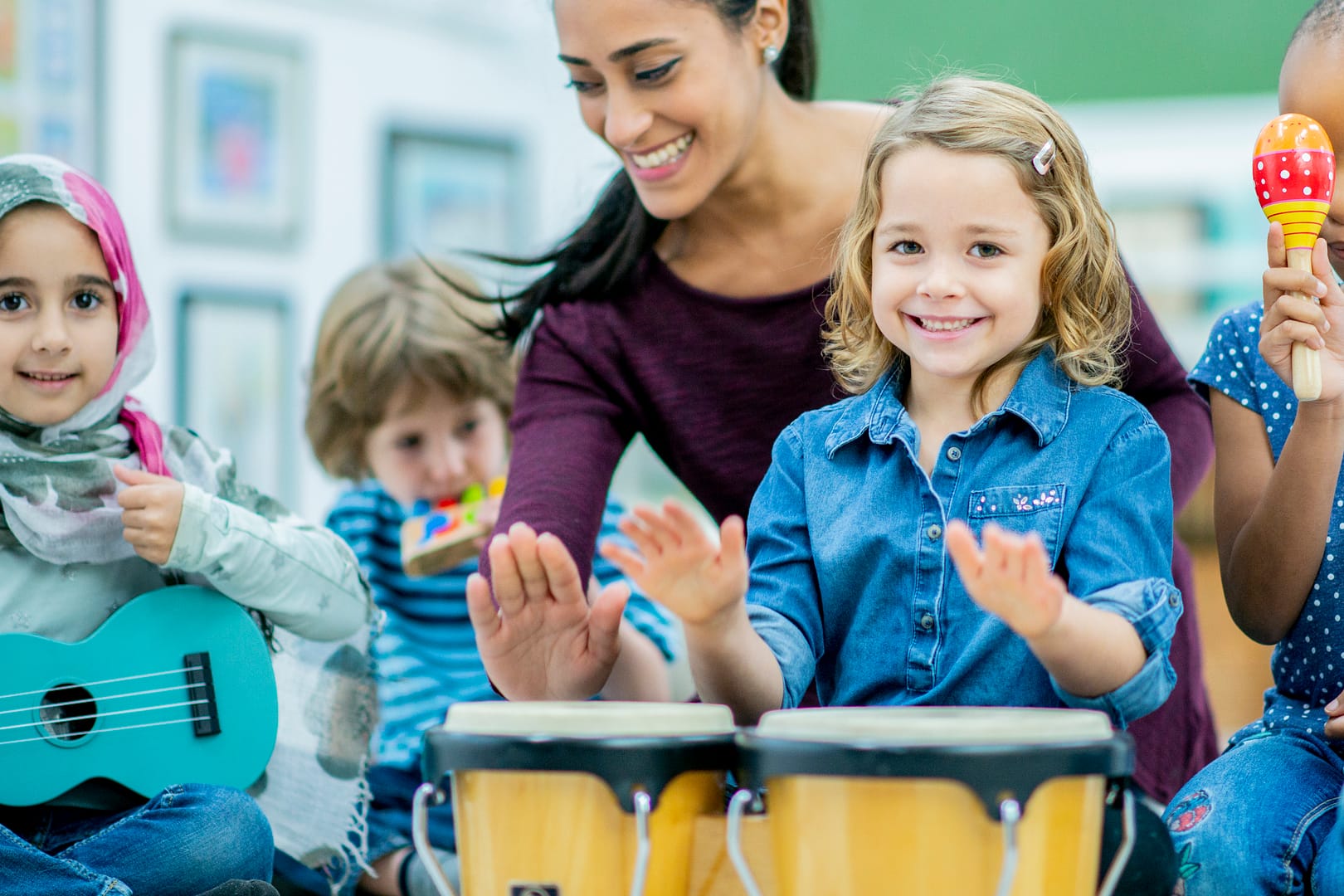How To Teach Primary Music, Even If You Don’t Feel Musical
Written by Candice West
Published on 3rd October 2022
Last Updated: 17th July 2024
Written by Candice West
Published on 3rd October 2022
Last Updated: 17th July 2024

Teaching music can be a daunting prospect if you feel you have little musical knowledge or experience. We’ve put together a few Music teaching tips for the primary Music curriculum to help you to deliver a valuable musical experience for both yourself and your pupils.
Ask your school to subscribe to a Music teaching platform. There are a few different options out there, but Kapow Primary’s Music curriculum is a great place to start. Kapow Primary (and others) offers Music lesson plans and schemes of work that have been created and developed by subject specialists, and the packages include everything you’ll need to help you deliver outstanding Music lessons, assess pupils effectively and ensure that good progression is made throughout the children’s primary education. These schemes of work cover everything in the national curriculum for Music and include ways to implement the Department for Education’s 2020 Model Music Curriculum.
Your local Music education hub has a responsibility to ensure that good musical learning is taking place within its region (within England) and that the objectives of the National Plan for Music are being met. Your local hub leader should be able to offer advice and guidance as well as CPD, training, support and resources to the schools within the area, which can help you to become a more effective Music teacher.
This might sound scary at first, but teaching your class how to play a musical instrument such as the glockenspiel, recorder or ukulele can be a great way for teachers to learn alongside the pupils. By playing a musical instrument, you’ll cover much of the National curriculum for Music, and whole-class instrumental teaching falls in line with the Model Music Curriculum guidelines. You can find lots of help and guidance online about whole-class instrumental teaching, but Kapow Primary’s specially designed tuned percussion scheme is a good place to start.
Good musicianship is a skill that is acquired over time, taking years of practice. While you certainly don’t have to be a good musician to teach primary school Music, that doesn’t mean you shouldn’t start trying to develop some musical skills. Pick a simple classroom instrument such as the glockenspiel, recorder or ukulele, and set aside a little bit of time each week (5 or 10 minutes is sufficient) to practice. You’ll find that you can quite quickly develop the level of competence required to teach primary school children and your confidence to teach music will improve, too. The internet is packed full of video tutorials and guides to help you. Kapow Primary Music scheme also contains a range of videos to support your musical skills and CPD.
Singing is the most accessible form of music-making. Even if you don’t like the sound of your voice, you can sing, so use singing in your Music lessons to help engage your pupils in a fully inclusive way. Singing is an especially useful tool for teaching early years and key stage 1 children, who may not quite have the coordination to make effective use of musical instruments.
Whether your class are singing or playing musical instruments, use backing tracks for the class to play along to. This helps keep the children playing together in time and helps them to develop a stronger sense of pulse and rhythm. Backing tracks can be as simple as a beat played from a keyboard or an accompaniment track on YouTube.
Try to include an element of performance in your Music lessons. This could involve asking one child to do a solo, a group of pupils to perform their work to the rest of the class, or even half the class performing for the other half. Performance is an important part of being a musician, and in a class setting can function as a formative peer-assessment task by asking pupils to provide constructive feedback on their classmates’ performances. It also provides teachers with the opportunity to listen to and assess pupils’ work properly.
Find out which children in your class are having instrumental lessons, and encourage them to demonstrate the lesson material to the rest of the class for you. While a child learning to play the violin, for example, won’t necessarily be the best recorder player in the class, it’s likely that they’ll have a good degree of musical skill and confidence and be keen to show off their knowledge.
While the national curriculum for Music states that children in key stage two should develop an understanding of musical notations, this doesn’t mean that you, or your pupils, need to be able to read music fluently. Notation can take the graphic form of shapes and lines to indicate the general pattern of a piece of music, and learning about Western staff notation can be as simple as understanding the way rhythm is written down or an ability to recognise a small number of pitches on a stave. When broken down into its basic elements, as you would do to teach your pupils, music notation is relatively straightforward, but you certainly don’t need to be able to read music to make good music. For additional support with staff notation, take a look at Kapow Primary’s teacher skill videos all on staff notation.
It can be tempting to spend a lot of time on listening work when you lack confident at teaching Music as this type of work feels more familiar, but it’s important to make sure that your pupils spend time actively engaged in making music, whether that’s through performance or through musical composition. Listening to music is a feature of the national curriculum for Music, but the focus for each of your Music lessons should be on encouraging the children to compose and perform music.